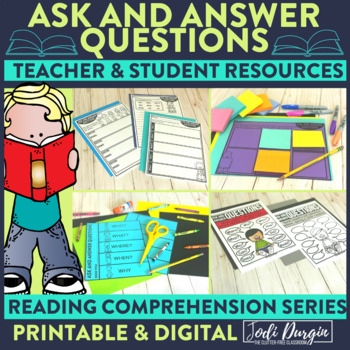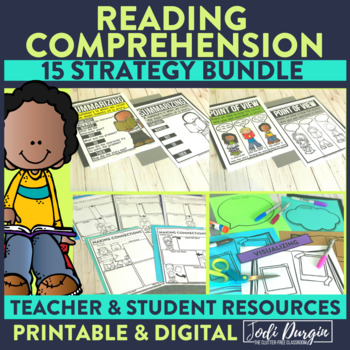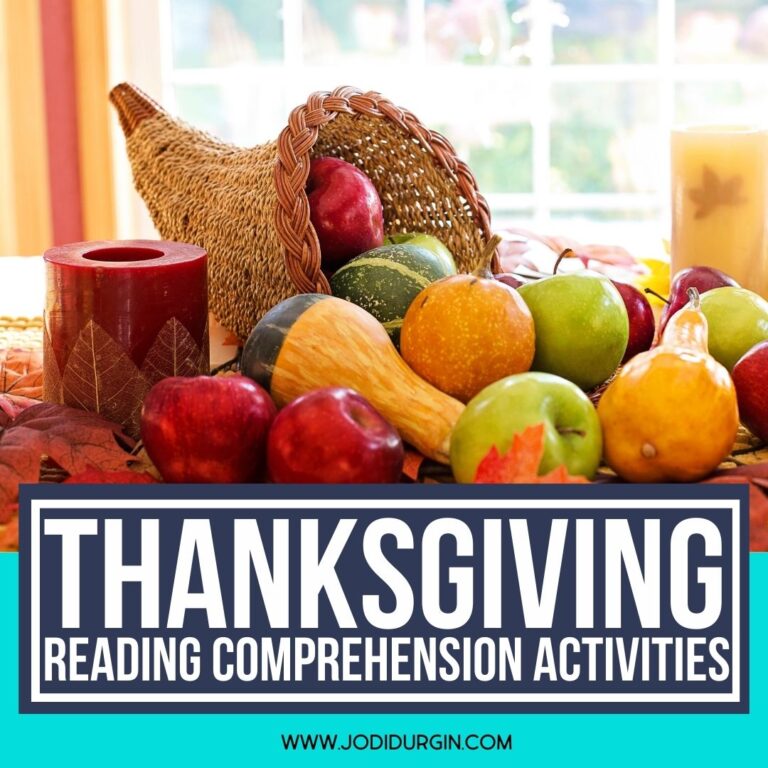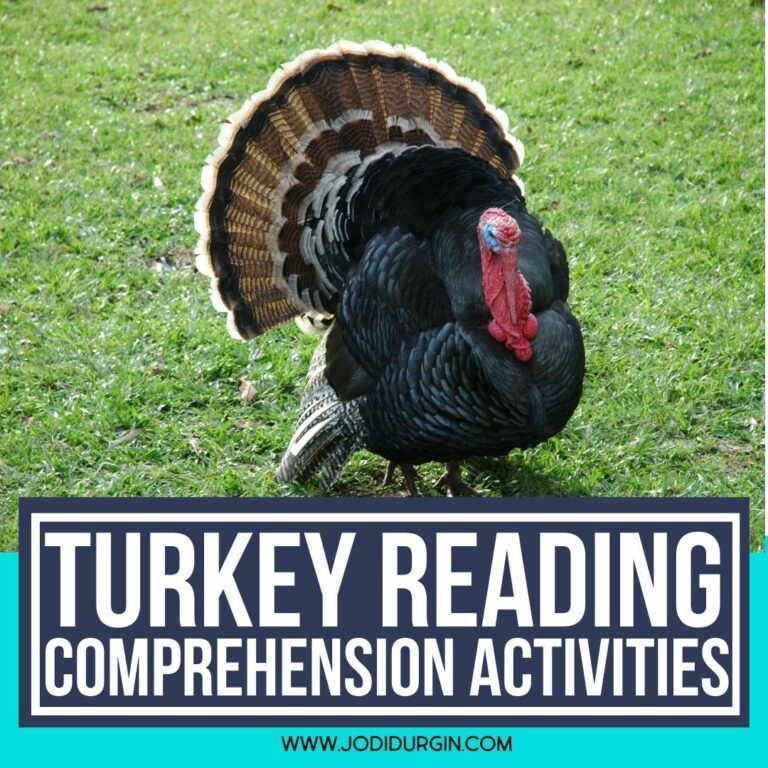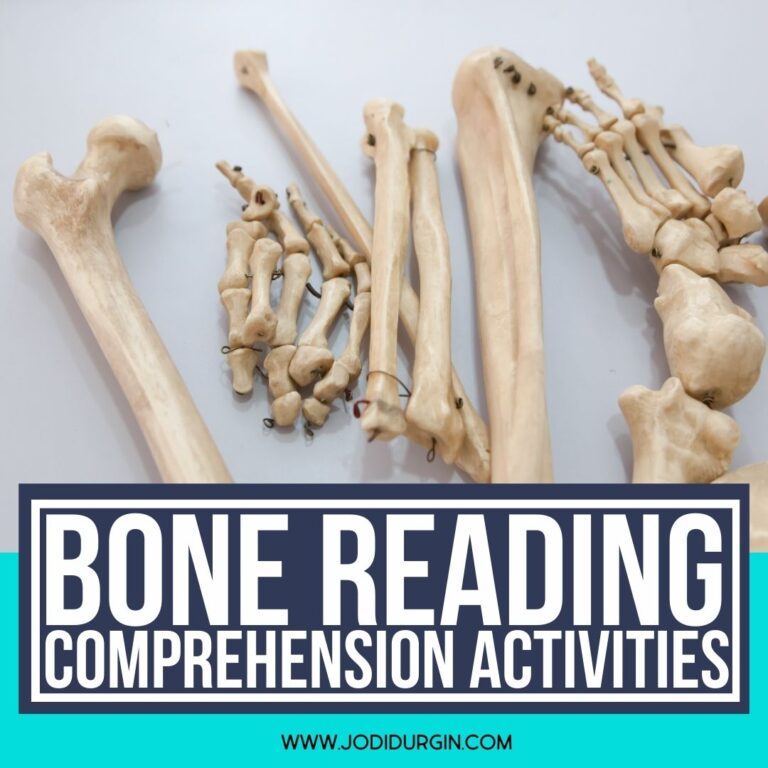Asking and answering questions is an important reading comprehension strategy for elementary students to become proficient in. Strong readers ask questions before, during, and after reading or listening to a story. It helps them better understand and enjoy stories. Learn all about how to teach asking and answering questions below!
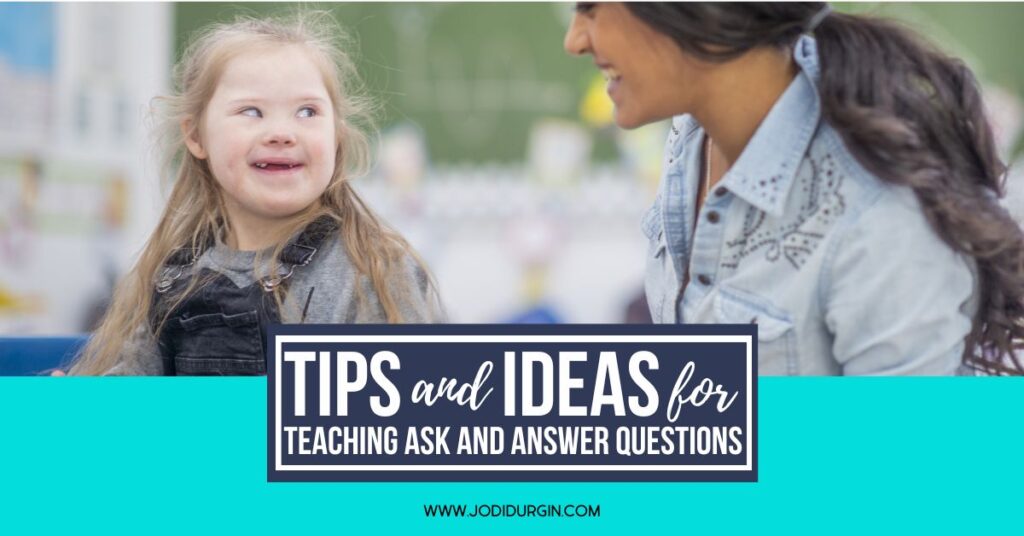
What is Asking and Answering Questions about a Text?
The ability to ask and answer questions while reading is an important comprehension strategy. Strong readers will ask themselves questions as they read in order to understand the text. These readers will then seek the answers to their questions as they read. It is important to teach students to ask questions before, during, and after reading.
Before reading, students might wonder what will happen in the story. While reading, questions can include students asking questions about their own reading, questioning what they are reading, and questioning the author. Students might take time to reread or continue reading to answer their questions. Readers will also wonder what will happen next as they make their way through a text. After reading, students might ask questions because they are still unsure about something that was not answered in the text or they want to learn more about the topic.
As students ask questions about their reading, it is important for them to try and find the answers. Students can find answers to their questions within the text, using their background knowledge, using inferencing skills, engaging in discussion with others, or conducting research.
Frequently, the teacher is the only person in the classroom asking questions about what was read. However, students must learn to ask questions themselves as they read and seek to answer their own questions. As a result, it’s important that we take the time to teach them about asking and answering questions.
Why Is Wondering an Important Reading Comprehension Strategy?
It’s very important to teach asking and answering questions because there are many benefits to readers asking their own questions and seeking answers. By doing so, students are more engaged in their reading and have a deeper understanding of what they have read. This is because they are monitoring their own comprehension as they read and they are interested in finding the answers to their questions.
Asking questions gives students a purpose and focus for their reading. When students ask questions about themselves as readers, they get an idea of what they understand and what they do not understand.
This skill is very important when it comes to other reading comprehension strategies as well. The ability to ask questions helps students to make predictions, make connections, and identify the problem and solution, author’s purpose and themes of what they read.
Teaching Standards for Asking and Answering Questions
Before we get into how to teach asking and answering questions, let’s look at the standards for this reading comprehension topic.
CCSS
- RL.1.1: Ask and answer questions about key details in a text.
- RL.2.1: Ask and answer such questions as who, what, where, when, why, and how to demonstrate understanding of key details in a text.
- RL.3.1: Ask and answer questions to demonstrate understanding of a text, referring explicitly to the text as the basis for the answers.
- RL.4.1: Refer to details and examples in a text when explaining what the text says explicitly and when drawing inferences from the text.
- RL.5.1: Quote accurately from a text when explaining what the text says explicitly and when drawing inferences from the text.
TEKS
- LA.1.6.B: generate questions about text before, during, and after reading to deepen understanding and gain information with adult assistance;
- LA.1.6.C: make and correct or confirm predictions using text features, characteristics of genre, and structures with adult assistance;
- LA.1.7.C: use text evidence to support an appropriate response;
- LA.2.6.B: generate questions about text before, during, and after reading to deepen understanding and gain information;
- LA.2.6.C: make and correct or confirm predictions using text features, characteristics of genre, and structures;
- LA.2.7.C: use text evidence to support an appropriate response;
- LA.3.6.B: generate questions about text before, during, and after reading to deepen understanding and gain information;
- LA.3.6.C: make and correct or confirm predictions using text features, characteristics of genre, and structures;
- LA.3.7.C: use text evidence to support an appropriate response;
- LA.4.6.B: generate questions about text before, during, and after reading to deepen understanding and gain information;
- LA.4.6.C: make and correct or confirm predictions using text features, characteristics of genre, and structures;
- LA.4.7.C: use text evidence to support an appropriate response;
- LA.5.6.B: generate questions about text before, during, and after reading to deepen understanding and gain information;
- LA.5.6.C: make and correct or confirm predictions using text features, characteristics of genre, and structures;
- LA.5.7.C: use text evidence to support an appropriate response;
3 Tips for Teaching Students to Ask and Answer Questions
Below are suggestions for when you teach your students about asking and answering questions when reading.
1. Read Aloud Picture Books
Reading aloud picture books is a great way to model and practice this reading comprehension strategy. There are tons of great read alouds out there for teaching students to ask and answer questions while they read. Some high-quality examples include Sylvester and The Magic Pebble, A Bike Like Sergio’s, and Can I Be Your Dog?.
2. Make Anchor Charts
Anchor charts are another great way to teach students about asking and answering questions. My asking and answering resource includes an interactive anchor chart that successfully engages students in their learning and provides a visual learning experience for students to learn about asking and answering questions.
3. Use Videos
The third on the list of tips for teaching students to ask and answer questions is playing videos. This is another great visual learning opportunity for students to learn about what can feel like a very abstract idea. This is an example of a video that is great for teaching students how to ask and answer questions about picture books.
Asking and Answering Questions Resources
These printable and digital resources for teaching elementary students about asking and answering questions make curriculum and lesson planning quick and easy. It includes teacher, parent, and student resources, so you’ll have everything you need to teach students about asking and answering questions and deliver meaningful research-based instruction rooted in current best practices.
What is Included
1. Teacher Resources
There are teacher notes about the strategy, teaching ideas, a planning page with question prompts, and list of mentor texts, so you have all of the information you need to plan a research and standards-based reading unit based on this reading comprehension strategy.
2. Parent Resources
There is a parent letter and a reading log with suggested question prompts so parents can confidently support and reinforce the strategy you are teaching with their children at home.
3. Instructional Resources
There are printables to create a large anchor chart and reference charts. Both save you lots of time searching for anchor chart ideas and supplemental teaching tools.
4. Student Resources
There are 3 printables and 2 activities for students that provide meaningful opportunities to practice and make sense of the reading strategy in a fun and engaging way.
5. Digital Resources
There are digital versions of several of the resources so students can access them in school or at home using a technology device of their choice.
Why Teachers Love this Resource
- This collection of resources is versatile in that it can be used on it’s own or can be used to supplement any reading curriculum, so you will be able to continue to use these resources if your school adopts a new reading program or you switch school districts.
- This resource is part of a larger collection of reading strategy products, so you can provide a consistent instructional approach that your students quickly learn and understand the expectations and routines for. Learn more about this collection here!
- It’s a huge time saver! Instead of hunting for background information on a reading strategy and then searching for resources to teach the strategy, this comprehensive resource includes all of the information and resources you need to teach a whole unit on this reading strategy.
- The student activities are a lot of fun for students, which helps create a productive learning environment where students are engaged and learning!
- It includes resources that provide a great way to create a home-school connection with students’ families and support parents/guardians in continuing student learning at home.
In closing, we hope you found this post about how to teach asking and answering questions helpful! If you did, then you may also be interested in this other post about elementary reading comprehension strategies.

